Our first report card in South America – The Orinoco River Basin, Colombia
Simon Costanzo ·This February, I headed further south in America than I have ever before…..to Colombia in South America (still in the northern hemisphere though at 3o N). This trip was on invitation from the World Wildlife Fund (WWF) in Washington D.C. with the aim to set up a report card for three tributaries of the Orinoco River within Colombia - The Meta, Bita and Guaviare Rivers. The Orinoco River begins its 1,330 mile journey to the Atlantic Ocean in the Andes of Colombia, and travels through Venezuela before forming a massive 8,700 sq mi delta up to 230 mi in width that discharges into the Gulf of Paría. It’s considered to be the third most important river system on the planet and part of it drains the Amazon forest biome. All up the Orinoco watershed encompasses 340,000 sq miles spanning Colombia (37%) and Venezuela (63%).

I was unsure what to expect in Colombia. Embarrassingly, all I could recall about the place was coffee, narcotics and violence. Indeed this was true not long ago, but what I found in its place is a very progressive, modern and exciting country with very passionate and friendly people. I loved it.
My trip to Cali, Colombia, started on an airplane via Miami where I overheard a couple of familiar accents a few rows behind me. Lot’s of “G’day mate”, “I’m stuffed” and “bloody hell”. Clearly, I was not the only Australian heading to Colombia on this flight. At customs I caught up with these “blokes” with a casual “are you Aussies?” to find out what I already knew – they were – but more interestingly that they were there to judge the world cliff diving championships…and they travel the world doing this. I wished them the best of luck and proceeded through the airport to my waiting driver Harold who could not speak a word of English, which nicely matched my inability to speak a word of Spanish. It was a quiet yet animated drive to the hotel.
I arrived at the Hotel Karli around 9 pm on a Tuesday night, checked in and immediately attended to my stomach. I recalled a grocery store a block away and was bold enough to venture out on my own in a new city to get some food. Off with the long pants and jackets required for the north, and on with shorts and a t-shirt required for the equator. A quick stroll down the street and I found myself in a very modern and large supermarket that put anything in my hometown of Easton, MD to shame. This surprised me, I wasn’t expecting it. I got my stash of food and headed back to retire for the evening.
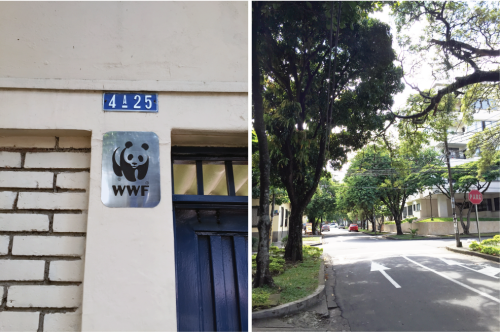
The next morning I met with Sarah Freeman from the WWF office who had also arrived late the evening before. Sarah is a water resource engineer who is project manager for the planned report card from the WWF side of things. Soon after we were joined by Cesar Freddy Suarez from the Cali WWF office who was our local contact for the project. Cesar is in charge of data support systems in the office (e.g. databases and GIS). Over breakfast, we familiarized ourselves with the coming days activities before heading over to the WWF office which was conveniently just around the corner. As with most of the houses in this green well-treed neighborhood, we were greeted by a very high brick wall with motion sensors on top and a solid metal gate. This kind of surprised me as the neighborhood seemed very safe, but perhaps this was the legacy of recent times gone by?
The WWF office in Cali Colombia is situated in a large Spanish style house complete with concrete filled bamboo as structural supports. Around 30 people work in this office, and combined with the Bogota office, approximately 60 people make up WWF Colombia. WWF began its work in Colombia in 1964 with its first Programme Office formed in 1993, headed by Mary Lou Higgins, originating from the Washington D.C. office, and who has stayed ever since. It was an exciting time to be there as the WWF USA Board meeting was being held the following week in Cartagena on the Caribbean coast of Colombia.
Colombia is bordered by 5 countries (Panama, Ecuador, Peru, Venezuela and Brazil) and has two coastlines (Pacific Ocean to the east, and Caribbean Sea to the north). Though I did not get to meet Leonardo DiCaprio, who is on the WWF Board, I did get to meet Tom Dillon who is the Senior Vice President of Forests and Freshwater for WWF in Washington D.C. Tom was a great guy and really excited about this project. Both he and Mary Lou were presenting an outline of the report card to the Board.

During our three-day workshop, we developed a detailed timeline for preparing and releasing the report cards including identifying stakeholders for workshops in May and July 2015. Throughout the workshop we were joined by a diverse group of super-passionate WWF staff advising us on all aspects of the work that WWF is doing in the Orinoco River basin from fish biology, socio-economics through to the likely effects of climate change. It was great to learn about the values that require protection, and the challenges faced in managing activities and development in the basin including oil palm plantations, oil extraction, cattle ranching, ornamental fish collection and illegal mining for coltan – used in electronic capacitors.
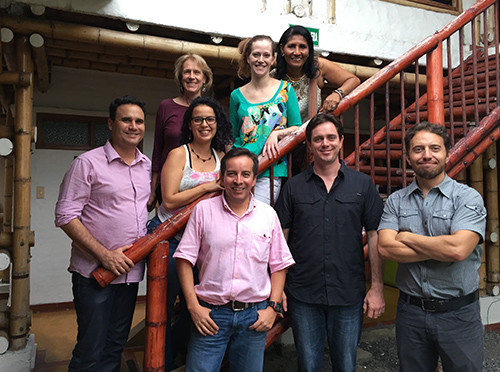
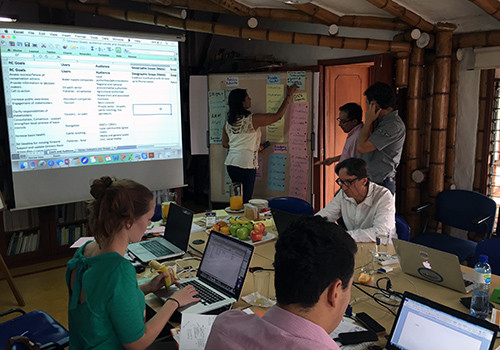
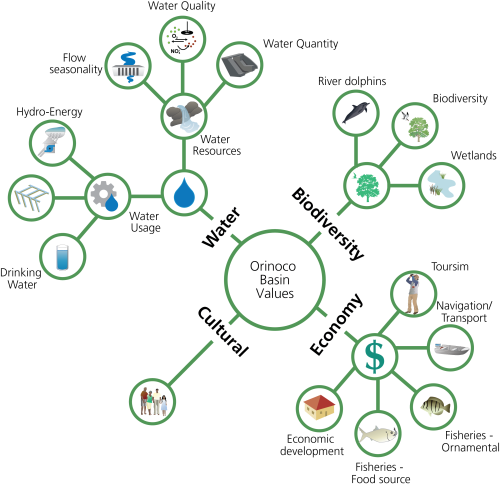
My trip to Colombia ended on a Friday, which meant only one thing…Bandeja Paisa for lunch. This is a traditional Colombian dish eaten on Fridays (also known for its ability to cure hangovers – so probably worthy of a Saturday or Sunday lunch as well). The combination of fried pork skin, beans, mince, fried eggs, avocado, fried plantain and rice tasted delicious, was seriously filling and low in calories.
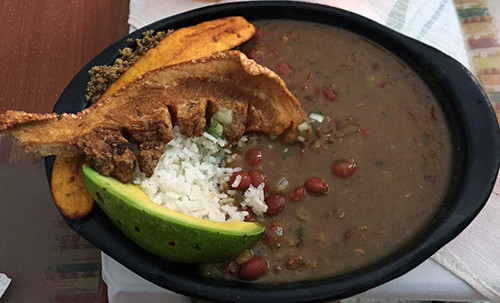
Lastly that evening, Mary Lou succumbed to my begging for a trip to the statue of Cristo Rey (Christ the King), which I had seen illuminated on top of a high mountain the first evening I arrived. Mary Lou, Tom, Sarah and myself drove up the narrow winding road to the 85 ft tall statue atop a large mountain overlooking the city. This Cristo Rey comes in just 13 ft shorter than Cristo Redentor (Christ the Redeemer) in Rio de Janeiro, Brazil...so yes it was big. And the view was fantastic and put in perspective how big and intense the city actually was. We wrapped up the evening with pizza at one of the numerous (precariously hanging) pizza establishments that lined the winding road down the mountain.
All in all, this was an inspirational trip for me. Not only did I visit a new country, taste new food and meet great people, I came home excited to be working on such challenging projects and creating new partnerships.
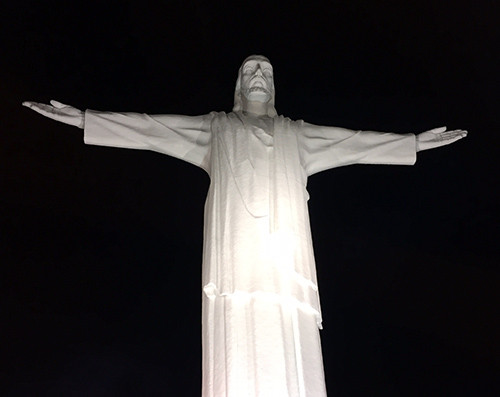
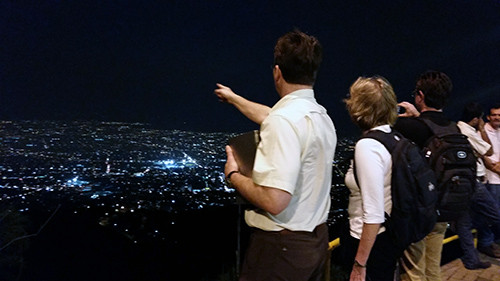
About the author
Simon Costanzo
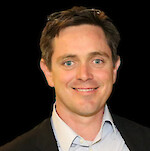
Dr. Simon Costanzo is a Science Integrator at the University of Maryland Center for Environmental Science in Cambridge MD. Simon’s career in environmental science over the past 20 years has been focused on developing and improving methods for the assessment, monitoring and management of aquatic, marine and terrestrial ecosystems. Simon has extensive experience in scientific data collection, synthesis, interpretation and communication. Simon’s career has provided a unique insight to a wide range of disciplines and stakeholder groups including government, academia and private industry. Dr. Costanzo obtained his academic training from University of Queensland in Australia (PhD).

